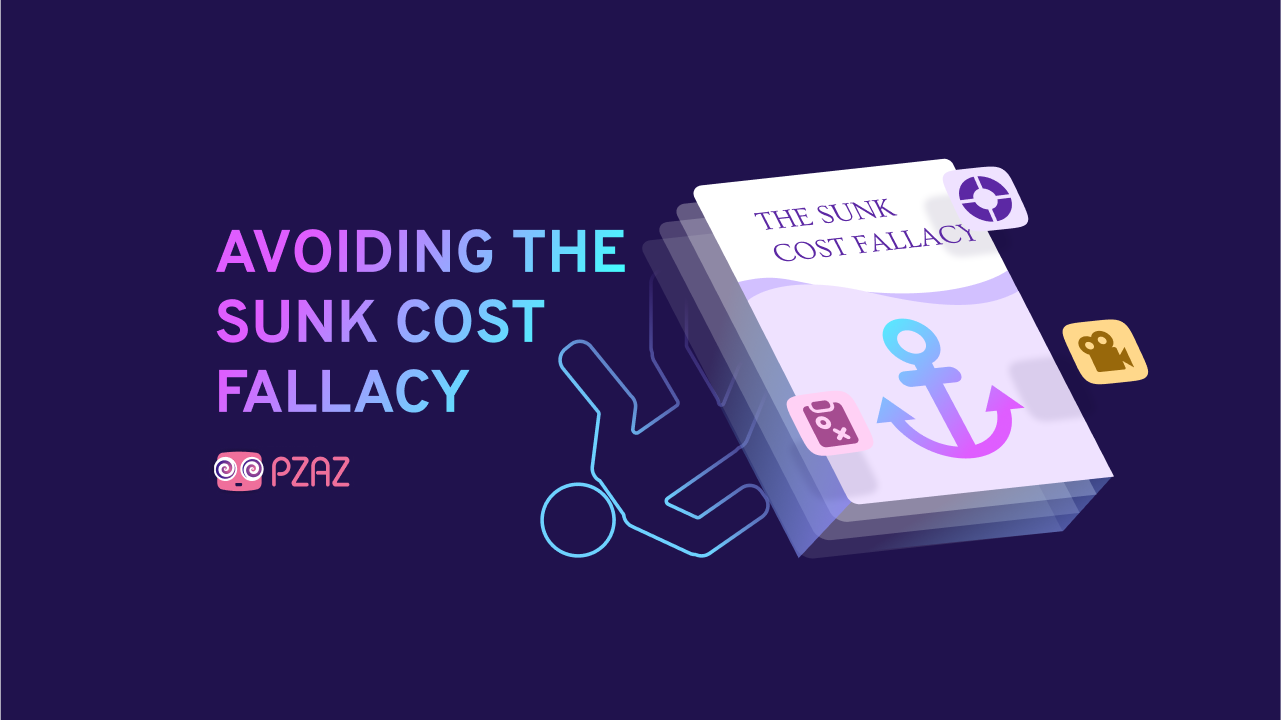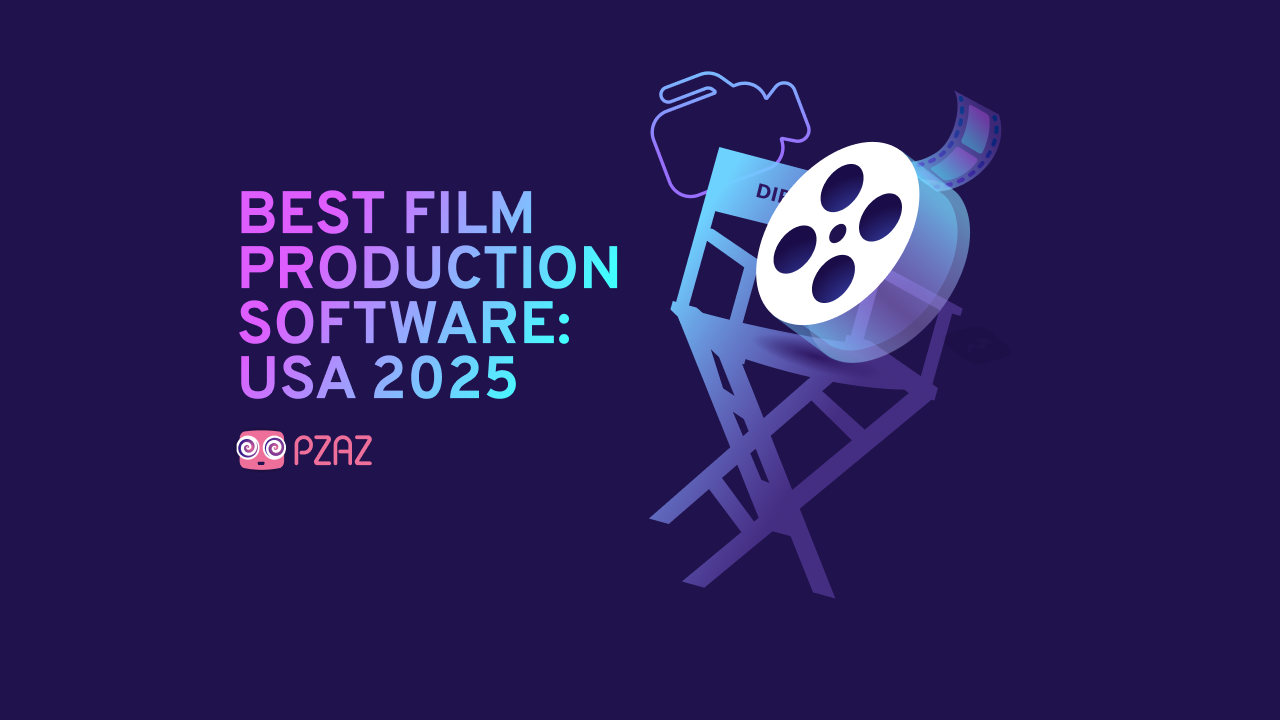Navigating the Sunk Cost Fallacy in Filmmaking: A Guide for Producers and Directors

Decoding the Sunk Cost Fallacy: A Filmmaker’s Guide
In the complex and high-stakes world of filmmaking, the line between passion and practicality often blurs, leading to one of the most common cognitive biases in business and creative endeavours: the sunk cost fallacy. This bias not only affects individual decision-making but can also influence the financial health and creative integrity of entire film projects. Understanding the sunk cost fallacy and learning to navigate its pitfalls is essential for filmmakers who aim to balance artistic ambition with financial prudence.
What is the Sunk Cost Fallacy?
The sunk cost fallacy occurs when individuals continue investing in a project due to the resources already committed, irrespective of the current and future costs involved. This fallacy leads to irrational decision-making, focusing on recuperating past investments rather than evaluating the project’s potential future value. In filmmaking, this can manifest in various stages, from pre-production to post-release, affecting scripts, production decisions, marketing strategies, and even sequel development.
Understanding Sunk Costs in Filmmaking
In the realm of film production, sunk costs represent the irreversible investments poured into a project. Delving into the diverse categories of expenses associated with creating a film provides valuable insights into the financial landscape of filmmaking. This exploration not only highlights where financial commitments are allocated but also sheds light on the potential impact of the sunk cost fallacy on decision-making processes at every phase of production.
Pre-Production Expenses
Script Development: This involves the costs of writers, script doctors, and sometimes optioning for existing works, such as novels or plays. The development phase can take years and consume significant resources in refining the story, characters, and dialogue.
Rights Acquisition: Acquiring the rights to adapt existing material (books, plays, life stories) requires upfront payment to copyright holders. These costs can vary widely depending on the material’s popularity and potential market value.
Preliminary Set Design and Concept Art: Early visualisations of sets, costumes, and characters help in pitching the film to financiers and collaborators. This stage might involve hiring artists and designers to create concept art and preliminary designs.
Location Scouting: Travel and labour costs associated with finding and securing the right locations for filming. This can include fees for location permits and negotiations with property owners.
Hiring Key Personnel: Securing directors, cinematographers, and other key crew members early in the project requires negotiations and sometimes upfront commitments or retainers.
Production Costs
Salaries for Cast and Crew: This constitutes a significant portion of the budget, covering everyone from the actors and directors to the production assistants and catering staff.
Set Construction and Location Fees: Building sets or altering locations to suit the film’s aesthetic and functional needs. This also includes rental fees for shooting on location.
Costumes and Makeup: Designing, creating, and maintaining the wardrobe for the cast, as well as special makeup effects, which can be particularly costly for period pieces or science fiction and fantasy films.
Equipment Rentals: Cameras, lighting, sound equipment, and cranes or drones for aerial shots are often rented rather than purchased to save costs.
Post-Production Costs
Editing: The process of cutting and assembling the film. This can be a lengthy process, requiring sophisticated software and skilled editors.
Visual Effects (VFX): Costs vary widely depending on the extent and complexity of the effects needed. This can range from simple background enhancements to elaborate CGI characters.
Sound Design and Music Composition: Creating the film’s auditory experience, including foley art, background scores, and licensing existing music. Original compositions and high-quality sound design are crucial for the film’s atmosphere and can be costly.
Marketing and Distribution Costs
Promotional Materials: Design and production of posters, trailers, and other marketing collateral.
Advertising: Costs associated with advertising the film through various channels, including digital media, television, billboards, and print.
Film Festival Submissions: Fees for submitting to festivals in hopes of securing awards or critical acclaim, which can boost the film’s visibility and marketability.
Distribution Deals: Negotiating and securing distribution can involve upfront costs, revenue-sharing agreements, and marketing commitments.
Understanding these costs is crucial for filmmakers to navigate financial decisions effectively. Once these investments are made, they cannot be recovered if the project is abandoned. This irretrievability is what often triggers the sunk cost fallacy.
Recognising these points—and the temptation to follow through with further investment due to these costs—can help in making more rational, future-focused decisions. By assessing projects based on their potential return rather than sunk investments, filmmakers can avoid the sunk cost fallacy and make strategic choices that align with their creative and financial goals.
Examples of the Sunk Cost Fallacy in action
To further illuminate the concept of the sunk cost fallacy and its implications in the filmmaking process, let’s explore some tangible examples. These real-world scenarios will demonstrate how this cognitive bias can manifest in various stages of film production, influencing decisions in ways that can potentially derail a project’s success. By examining these examples, readers will gain a deeper understanding of how to recognise and navigate the sunk cost fallacy in their own creative endeavours.
Continuing with an Unworkable Script
Imagine a scenario where a studio has spent significant resources developing a script. Despite feedback indicating fundamental flaws—unrelatable characters, a convoluted plot, or a lack of originality—the decision-makers may proceed with production, fearing the loss of their initial investment. This continuation, driven by sunk costs, overlooks the potential for greater financial and reputational damage if the film fails critically and commercially.
Completing a Troubled Production
Films sometimes face unforeseen challenges during production, such as technical difficulties, logistical issues, or conflicts among key personnel. When faced with escalating costs and delays, producers might double down on their commitment to complete the film, driven by the belief that abandoning the project would waste the resources already spent. This can lead to compromised quality and increased financial losses.
Marketing a Low-Potential Film
After a film is completed, initial screenings might reveal it has little potential for success. Despite this, studios may significantly increase marketing spend in an attempt to recoup their investment. This decision, influenced by the sunk cost fallacy, can result in escalating losses if the film does not resonate with audiences, as the additional marketing costs fail to translate into sufficient box office revenue.
Sequels to Underperforming Films
Studios sometimes commit to sequels or continue franchises even after a film performs poorly. The rationale is to leverage the existing investment in world-building and character development. However, this strategy can backfire if the original film’s lack of success was due to fundamental disinterest from the target audience, leading to further financial losses.
Overcoming the Sunk Cost Fallacy
To counteract the sunk cost fallacy in filmmaking, decision-makers need to:
- Evaluate projects based on future potential: Decisions should be made based on an objective assessment of future returns, not past expenditures.
- Set clear benchmarks and exit strategies: Establishing performance indicators for different stages of a project can help identify when it’s time to consider halting further investment.
- Seek external perspectives: Independent assessments can provide objective insights that mitigate the emotional attachment to sunk costs.
- Embrace a culture of learning: Viewing unsuccessful projects as opportunities for learning rather than failures to be justified can shift the focus towards making more rational future investments.
Understanding and acknowledging the sunk cost fallacy can empower filmmakers and studios to make decisions that are in the best interest of both their artistic integrity and financial sustainability.
Steering Clear of the Sunk Cost Trap: A Path to Sustainable Filmmaking
Conclusions
The sunk cost fallacy is a pervasive issue in filmmaking, where the line between creative ambition and financial viability is often thin. By recognising and addressing this cognitive bias, filmmakers can make more rational decisions, balancing their artistic visions with the practicalities of film production and distribution. Implementing strategies to mitigate the influence of sunk costs can lead to more successful and sustainable filmmaking practices, ensuring that resources are allocated to projects with the highest potential for artistic and financial success.
Best Film Production Software: USA 2025
Find out what filmmakers value most in their software tools, from editing support to progress tracking and post-production help, and learn why Pzaz is the ultimate creative partner in bringing your stories to life.
Film Task Management Statistics: USA 2025
Discover key film task management statistics from 1,063 independent US filmmakers in 2025. Learn how they handle deadlines, tools, team updates, and task dependencies to keep productions on track.

 SCRIPTWRITING
SCRIPTWRITING STORYBOARDING
STORYBOARDING SCENE BREAKDOWN
SCENE BREAKDOWN SHOT LIST CREATION
SHOT LIST CREATION CREW & CAST MANAGEMENT
CREW & CAST MANAGEMENT COLLABORATION TOOLS
COLLABORATION TOOLS PRODUCTION & SCHEDULING
PRODUCTION & SCHEDULING FILE SHARING & MEDIA STORAGE
FILE SHARING & MEDIA STORAGE
